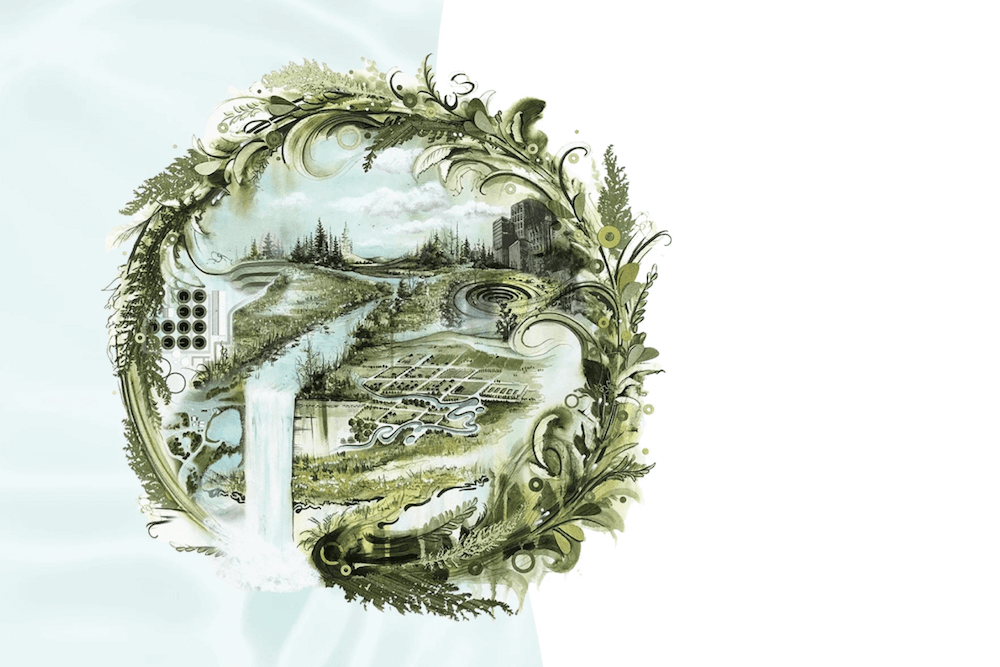Photo: Scott Bauer,
USDA-ARSSpanish explorers took potatoes to Europe from the Peruvian
Andes. Europeans were slow
to accept them, because they belong to the nightshade family,
which has many poisonous
members.Once accepted, though, potatoes quickly became a staple
crop, particularly in Ireland,
where the rich soil and cool climate are perfect for growing
them.In 1845, late blight (Phytophthora infestans)
struck, wiping out the crop for
two years. During the subsequent famine, 750,000 to 1.5 million
people starved to death.Ireland didn’t recover from the famine for the rest of the
century, its population
falling from more than 8 million to fewer than 5 million. More
than 1.5 million Irish
people emigrated to the United States, contributing to the
large Irish-American population
here today.
You Don’t Have to Buy
Them
Potatoes are an important commodity in America today. U.S.
farmers grew more than 47
million pounds in 1998.
Although potatoes are widely available, you can grow them
yourself.First, take a soil test to determine pH and soil fertility.
Potatoes grow best in acid
soils with a pH of 5.0 to 5.5. A pH above this will increase
the occurrence of scab, a
disease of potato.Use elemental sulfur to lower the pH. Lime will raise
it.The soil should be well-tilled and drain easily. Standing
water causes potatoes to rot
in the ground. If your soil is prone to standing water, use
raised beds to improve
drainage.
Potatoes Need Ample
Nitrogen
Potatoes are fairly heavy feeders. They require about 1
pound of nitrogen per 100 feet
of row in south Georgia coastal plain soils. They need slightly
less than that in the
Piedmont, mountain and Limestone Valley soils of north
Georgia.Set phosphorus and potassium rates based on the soil test.
If you don’t take a soil
test, apply at 1east 1 pound of phosphorus and potassium per
100 feet of row.Split fertilizer applications for more efficient use.
Incorporate one-third before
planting, one-third after emergence, and one-third three weeks
after that.
|
|
Use Certified Seed
Pieces
Start with certified seed pieces. Buy them from your local
garden center, feed and
seed, or by mail order. Often, these seed pieces have been
treated with a fungicide, which
will help prevent soil-borne diseases.It takes about 15 pounds of potato seed pieces to plant 100
feet of row. Space rows
about 36 inches apart with seed pieces every 8 to 12
inches.Plant in mid-February in south Georgia, mid-March in central
Georgia and by April 10 in
north Georgia.
Plant, Bed,
Harvest
Seed pieces should be planted 3 to 4 inches deep. As plants
emerge and begin to grow,
bed up the soil around the plants to encourage more potatoes,
since all new potatoes will
form above the seed piece.Potatoes should be ready for harvest three to four months
after planting, depending on
variety and environmental conditions. They’re ready for harvest
when the tops turn yellow
and begin to die. Take care not to damage the tubers as you dig
them.You can store potatoes three to five months if you keep them
cool. But store only
potatoes free of damage and disease.
For Best
Storage…
Hold them at 60-70 degrees for at least four days before
storing them at 40 degrees. An
unheated cellar or similar place is ideal for potato
storage.Potatoes in cool storage for a long time may develop high
sugar content and taste
sweet. These potatoes turn dark when cooked.To eliminate the sweet taste and dark color, raise the
storage temperature to 70
degrees for one to four weeks before cooking.Potatoes are rich in complex carbohydrates, fiber, vitamin C
and magnesium, with no fat
or cholesterol. Enjoy.





